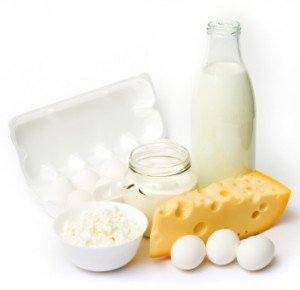 The tipping point when it comes to better monitoring the health of your bones appears to be around 50 years of age. This is when one in every eight men, and one in every four woman begin to suffer from various degrees of Osteoporosis.
The tipping point when it comes to better monitoring the health of your bones appears to be around 50 years of age. This is when one in every eight men, and one in every four woman begin to suffer from various degrees of Osteoporosis.
What this translates to is millions of North Americans who in their mid life years, are at risk of losing some type of mobility. This results in loss of self esteem, independence, and overall enjoyment of life.
There are also approximately 25% percent of these individuals who are permanently injured, or even lose their lives from bone related incidents, such as, hip fractures and broken bones, that’s caused by this disease.
So preventative maintenance is recommended to avoid being a causualty. There are a few steps which you can immediately take to maintain better bone health, immediately, as well as in your latter years.
Steps For Better Bone Health
Consistent Exercising Beginning At An Early Age
The density of your bones will usually peak, and is at its strongest at around 30 years of age. The more physically active that you are before and during this age, by doing exercises which are weight bearing, can do wonders for the strength of your bones.
So by performing certain exercises on a consistent basis, such as, walking, jogging, biking, and strength building exercises, such as weight lifting, are excellent starts. Do so on a daily basis so it becomes routine, and the stronger that your bones will become.
The sheer density of your bones builds a stronger solid foundation of strength, which then delays the bone loss process which is inevitable as one ages.
Once you increase the muscle mass around your bones, this also by exercising, will improve your flexibility and your balance, which helps in preventing potential fractures caused by accidents.
Taking The Proper Supplements
You may be aware by now that calcium is the foundation for building strong bones. So if you happen to deficient, which occurs to individuals who are intolerant, or don’t enjoy or avoid consuming the following foods, such as:
• Dairy products
• Almonds
• Soy-based foods
• Canned fish bones from Sardines or Salmon, or
• Dark green vegetables
Your body may be lacking in calcium. So if you avoid any of these foods, it’s recommended you take a calcium supplement.
What happens once you have a deficiency of calcium in the body, is it begins to extract the resident calcium directly from the skeletal bones in your body, which then makes them weak and brittle.
If Your Over 50 Make Sure You Take Vitamin D
Getting the recommended dosage of vitamin D becomes difficult at this age, or for those who live in northern climes where there’s limited natural sunshine. So anyone under these conditions should be taking a minimum of 1000 IU (International Units) of vitamin D on a daily basis.
What this particular vitamin does is it absorbs calcium in the body, keeps the bones healthy, improves your balance, and the muscles strong.
Avoid Smoking And Excess Alcohol
What too much alcohol consumption does is it promotes the rapid depletion of magnesium from your system, which is an essential mineral. As a result, heavy drinking depletes crucial bone building calcium.
Also, too much alcohol consumption can lead towards loss of balance which can lead towards bone fractures. Too much caffeine consumption and smoking can also deplete natural calcium levels in your body. Smoking tobacco has also been associated with the increase in bone fractures, even from minimal trauma.
Ignoring Bone Fractures
If you happen to be 40 years of age or older, and you happen to break a bone from a minimal blow, such as falling down, this “fragility fracture” can be the onset of osteoporosis.
After getting the bone treated by an orthopedic doctor, it’s also important to discuss this issue with your family doctor. Fragility fractures can become a common occurrence in adults in this age group, and be a warning sign of bone disease.
Testing For Bone Density 65 Years And Beyond
Particularly when it comes to women, the risk of getting a fragility fracture will increase significantly at 65 years and older, while remaining slightly less for men.
What needs to be tested at this age is one’s baseline number, as well as having a bone mineral density test done as well. The results will help your doctor in determining, along with other factors, what the risk level is for you getting a possible fracture. Beyond the age of 60, 80% of all fractures are because of osteoporosis.
Reveal All To Your Doctor
At times, by reading just the medical headlines, some will just stop taking their osteoporosis medication that’s prescribed to them. The truth being that these prescribed drugs are able to lower the chances of fragility fractures by up to 40% percent for those at high risk.
Also, usually out of embarrassment or fear, they fail to tell their doctors that they’re no longer taking the bone strengthening medication. The lapse then will directly impact the health of their bones.
So it’s vitally important to know that doctors are here to help, and most likely heard it all. What they want to do is diagnose and then help their patients take charge of their health, the best way that’s possible.
So for better bone health, it’s never too late to take these steps, and your skeleton and bones will thank you as you age, this by not getting fractures.